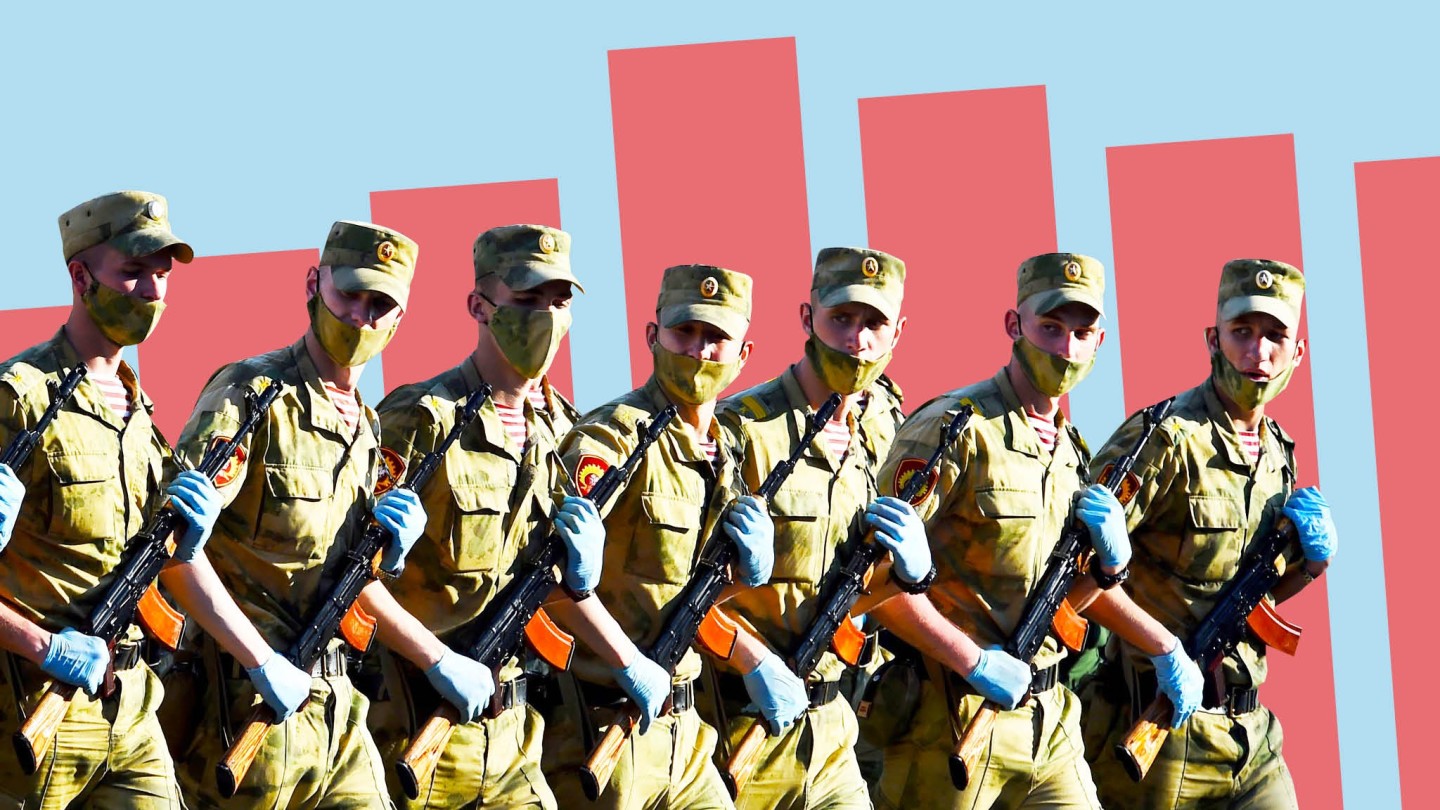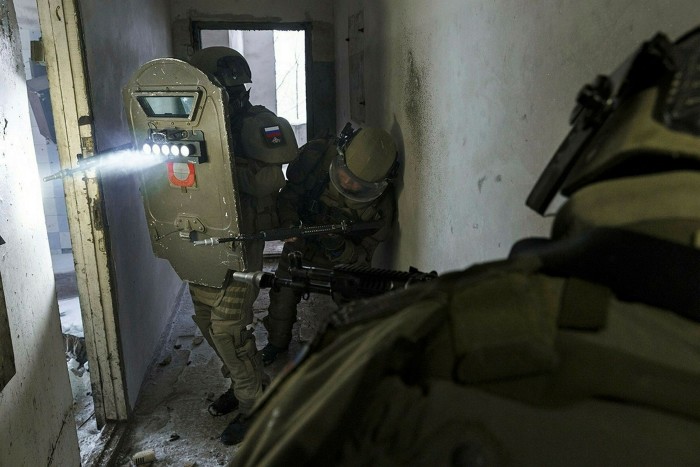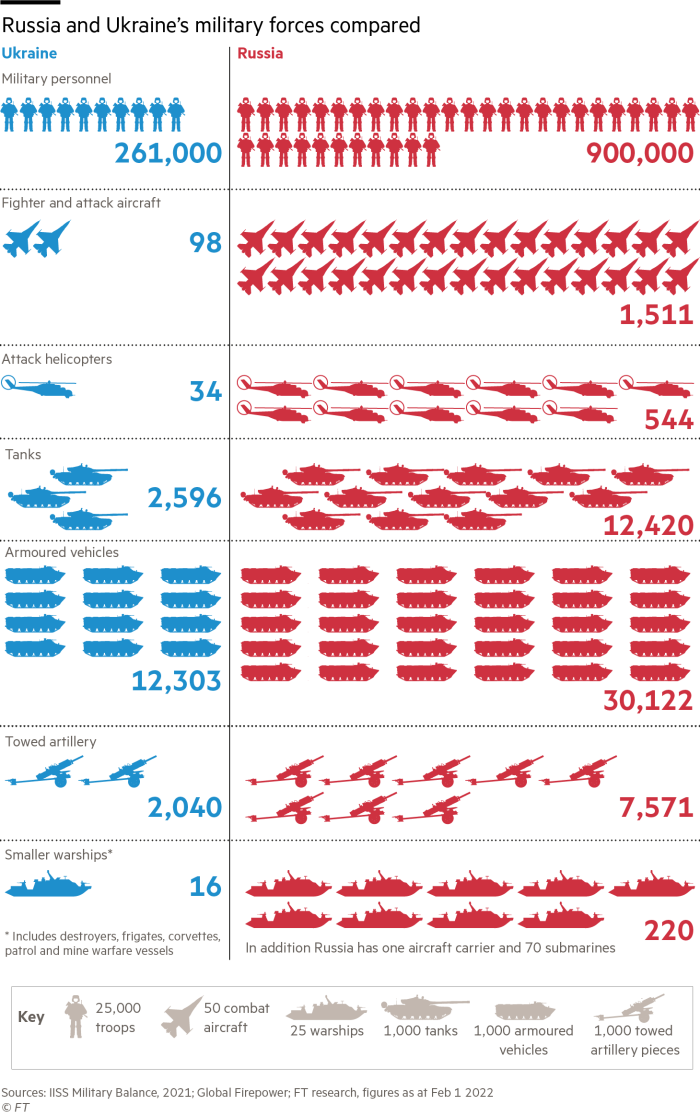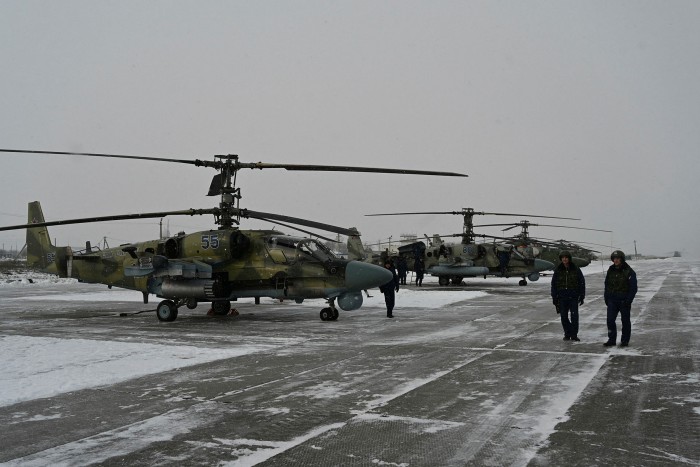Russia’s revamped military learns from failures of the past

Simply sign up to the War in Ukraine myFT Digest -- delivered directly to your inbox.
Three weeks ago, Russian paratroopers commanded by Colonel General Andrey Serdyukov deployed 4,000km from Moscow to Kazakhstan at the invitation of its government to help quell mass protests. They accomplished their peacekeeping mission in just 10 days and left.
Compared with the limited and lightning-fast operation in Kazakhstan, today the international community is warning that Russia appears to be preparing for a very different operation: a comprehensive invasion of Ukraine.
Moscow has repeatedly denied that it plans to invade, despite open-source intelligence showing that it continues to mass troops on the border between the countries. But should President Vladimir Putin order an attack, 62-year-old Serdyukov, the head of Russia’s VDV paratroopers — the world’s largest airborne force — is likely to play a leading role.
“The VDV is typically the tip of the spear,” said Michael Kofman, a Russian military expert at the US research organisation CNA and author of a widely cited article on Putin’s military strategy. “It has already fought extensively in Ukraine in 2014 and 2015. You would see quite a few VDV formations in any new invasion.”
Serdyukov’s career, which has encompassed deployments in Chechnya and Crimea, is illustrative of how Russia’s army has evolved under Putin, with the military, alongside the country’s nuclear arsenal, becoming a central instrument of the president’s foreign policy, say analysts.
Two decades ago, the military was a lumbering and poorly equipped Soviet-era force of badly paid conscripts, padded with officers — almost one for each soldier — that took heavy casualties during the brutal suppression of the Islamist insurgency in Chechnya.

Today, analysts say, it is a streamlined force capable of peacekeeping operations in Kazakhstan, out-of-theatre interventions such as in Syria in 2015, and stealthier missions, such as the annexation of Crimea in 2014.
“The Ukrainian army may be better than it was in 2014, but Russian forces are still far stronger and have also modernised,” said Bettina Renz, author of Russia’s Military Revival and professor of international security at Nottingham university. “[Russia] has more capabilities, and with that comes more options.”
The turning point came in 2008 when Russian forces bungled a war with Georgia. The intervention lasted only five days, yet several planes were lost to friendly fire, and field communications were so poor that commanders reportedly had to use their own mobile phones. Reconnaissance drones could only transmit pictures after landing, instead of in real time.
A massive revamp ensued. Pay was increased, equipment modernised, combat strategies refined and a demoralised officer class increasingly deployed into action. Poorly trained conscripts began to be replaced with career soldiers.
“Now the [army] is able to choose and recruit . . . maybe not the absolute best, but not the worst either,” said Ruslan Pukhov, director of the Moscow-based Centre for Analysis of Strategies and Technologies.

The Pentagon last week warned that Russia had deployed enough troops and equipment to invade Ukraine at any moment and had a “range of options”, including an attack aimed at occupying the country.
Analysts estimate that 52 Iskander ballistic missile launchers have been placed near the border, plus 76 battle-ready Battalion Tactical Groups, which average 800 troops, more than twice the usual number.
Overall, Russia has an army of about 900,000 personnel, including 280,000 ground troops. Over the past decade, it has added new aircraft, modernised its tanks and cut the ratio of conscripts to enlisted soldiers from nearly half to 30 per cent.
Ukraine has an active force of 261,000 personnel, of which 145,000 are in the army, plus a further 900,000 reservists. Although hardened by eight years of conflict in the Donbas, where separatists are fighting to break away from Kyiv, the Ukrainians lack comprehensive air defence systems, most of which remain in Crimea and are in Russian hands.

The fruits of Russia’s reforms became clear during the annexation of Crimea and were confirmed the following year in Syria, say analysts. “To many people’s surprise here, including mine, Russian actions [in Syria] were successful, efficient and cost effective,” Fyodor Lukyanov, editor-in-chief of Russia in Global Affairs magazine, said in a recent interview at Pittsburgh university’s centre for international studies.
Syria also served as a test bed for precision missile strikes and unmanned vehicles and as a training ground for more than 60,000 personnel, including officers.
“Serdyukov’s experience is the rule rather than the exception,” said Henry Boyd, a military expert at the International Institute for Strategic Studies in London. “Russia has a deep front bench of senior commanders.”

The reforms have not always matched the ambitions, say analysts. Shortages of skilled personnel and high-tech components, especially advanced chips, have delayed deliveries of next-generation equipment. “Have you heard of many cases where our people went to study at, say, MIT and then returned to Russia? I haven’t,” Pukhov said.
Even so, military experts say, Russia’s modernised forces are capable of delivering a massive dose of blunt force.
“Russian missiles may not be precise enough to target the top right-hand window of a building, as the US and it allies can. But they are still accurate enough to blow up the whole building,” said Samuel Cranny-Evans, a military sciences analyst at the Royal United Services Institute.
With Ukraine, Russia has also retained an element of surprise. By parking equipment against the border, which can then be manned by troops brought quickly forward, Kofman said, the scope and timing of any final operation would not be revealed until late into preparations.
“If the VDV starts surging forces to take position near Ukraine’s borders, that’s a good indicator that they’re planning for an offensive,” Kofman added.
Comments